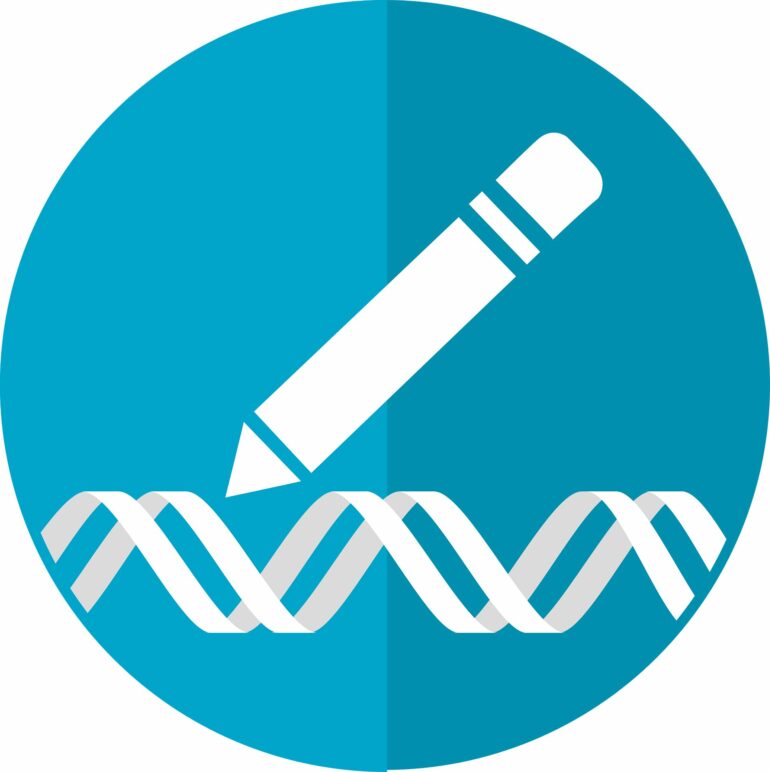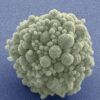A commonly used scientific method to analyze a tiny amount of DNA in early human embryos fails to accurately reflect gene edits, according to new research led by scientists at Oregon Health & Science University.
The study, published today in the journal Nature Communications, involved sequencing the genomes of early human embryos that had undergone genome editing using the gene-editing tool CRISPR. The work calls into question the accuracy of a DNA-reading procedure that relies on amplifying a small amount of DNA for purposes of genetic testing.
In addition, the study reveals that gene editing to correct disease-causing mutations in early human embryos can also lead to unintended and potentially harmful changes in the genome.
Together, the findings raise a new scientific basis for caution for any scientist who may be poised to use genetically edited embryos to establish pregnancies. Although gene editing technologies hold promise in preventing and treating debilitating inherited diseases, the new study reveals limitations that must be overcome before gene-editing to establish a pregnancy can be deemed safe or effective.
“It tells you how little we know about editing the genome, and particularly how cells respond to the DNA damage that CRISPR induces,” said senior author Shoukhrat Mitalipov, Ph.D., director of the OHSU Center for Embryonic Cell and Gene Therapy; and, professor of obstetrics and gynecology, molecular and cellular biosciences, OHSU School of Medicine, OHSU Oregon National Primate Research Center. “Gene repair has great potential, but these new results show that we have a lot of work to do.”
The findings come during the Third International Summit on Human Genome Editing in London. On the eve of the last international summit, held in Hong Kong in November 2018, a Chinese scientist revealed the birth of the world’s first babies resulting from gene-edited embryos through an experiment that generated global condemnation.
Misdiagnosing embryos
Before an edited embryo can be transferred to establish a pregnancy, it is important to make sure the procedure worked as intended.
Because early human embryos consist of just a few cells, it’s not possible to collect enough genetic material to effectively analyze them. Instead, scientists interpret data from a small sample of DNA taken from a few or even a single cell, which then must be multiplied millions of times during a process known as whole genome amplification.
The same process—known as preimplantation genetic testing, or PGT—is often used to screen human embryos for various genetic conditions in patients undergoing in vitro fertilization.
Whole genome amplification has limitations that reduce the accuracy of genetic testing, said senior co-author Paula Amato, M.D., professor of obstetrics and gynecology in the OHSU School of Medicine.
“The concern is that we might be misdiagnosing embryos,” Amato said.
Amato, who uses in vitro fertilization to treat patients struggling with infertility as well as to prevent the transmission of inherited diseases, said PGT using more advanced technology is still clinically useful for detecting chromosomal abnormalities and genetic disorders caused by a single gene mutation transmitted from parent to child.
The study highlights the challenges of establishing the safety of gene-editing techniques.
“We may not be able to reliably predict that this embryo will result in a healthy baby,” Mitalipov said. “That’s a major problem.”
To overcome these issues, OHSU researchers, along with collaborators with research institutions in South Korea and China, established embryonic stem cell lines from gene-edited embryos. Embryonic stem cells grow indefinitely and provide ample DNA material that does not require whole genome amplification to analyze.
Researchers say the discovery highlights the error-prone nature of whole genome amplification and the need to verify edits in embryos by establishing embryonic stem cell lines.
Study verifies gene repair
Using embryonic stem cells, the new study verifies the process of gene repair that Mitalipov’s lab developed; the findings were published in the journal Nature in 2017 and verified in 2018.
In that study, scientists cut a specific target sequence on a mutant gene known to be carried by a sperm donor.
Researchers found that human embryos repair these breaks, using the normal copy of the gene from the other parent as a template. Mitalipov and co-authors confirmed that this process, known as gene conversion, occurs regularly in early human embryos following a double-strand break in their DNA. Such a repair, if used to establish a pregnancy through in vitro fertilization and embryo transfer, could theoretically prevent a known familial disease from being passed on to the child, as well as all future generations of the family.
In the study published in 2017, the OHSU researchers targeted a gene known to cause a deadly heart disease.
In this new publication, researchers targeted other discrete mutations using donated sperm and eggs, including one mutation known to cause hypertrophic cardiomyopathy, a condition in which the heart muscle becomes abnormally thick, and a different one associated with high cholesterol. In each case an enzyme known as Cas9, used in tandem with CRISPR, induced a double-strand break in DNA at the precise site of the mutation.
Creating problems
In addition to replicating and confirming the gene-repair mechanism reported in 2017, the new study examines what happens in the genome beyond the specific site where the mutant gene is repaired. And that’s where a problem can occur.
“In this paper we asked, ‘how extensive is that gene conversion repair mechanism?'” Amato said. “It turns out that it can be very lengthy.”
Extensive copying of the genome, from one parent to the other, creates a scenario known as loss of heterozygosity.
Every human being shares two versions, or alleles, of every gene on the human genome—one contributed from each parent. Most of the time, the alleles are identical, given 99.9% of any individual’s DNA sequence is shared with the rest of humanity. In some cases, however, one parent will carry a recessive disease-causing mutation that’s normally canceled out by the other parent’s dominant healthy version of the same gene.
These polymorphisms in the genetic code can be critically important. For example, a gene may encode a protein that protects against specific types of cancer.
“If you have one abnormal copy of a recessive mutation, that may pose no risk,” Amato said. “But if you have loss of heterozygosity leading to two mutant copies of the same tumor suppressor gene, now you’re at significantly increased risk for cancer.”
The more genetic code that’s copied, the greater the risk of dangerous genetic changes. In the new study, scientists measured gene conversion tracts ranging from a relatively small segment to as large as 18,600 base pairs of DNA.
In effect, the repair of one known mutation may create more problems than it solves.
“If you’re cutting in the middle of a chromosome, there could be 2,000 genes there,” Mitalipov said. “You’re fixing one tiny spot, but all these thousands of genes upstream and downstream may be affected.”
The finding suggests that much more research is needed to understand the mechanism at work in gene-editing before using it clinically to establish a pregnancy.
More information:
Shoukhrat Mitalipov, Limitations of gene editing assessments in human preimplantation embryos, Nature Communications (2023). DOI: 10.1038/s41467-023-36820-6. www.nature.com/articles/s41467-023-36820-6
Provided by
Oregon Health & Science University
Citation:
Study reveals limitations in evaluating gene editing technology in human embryos (2023, March 7)



